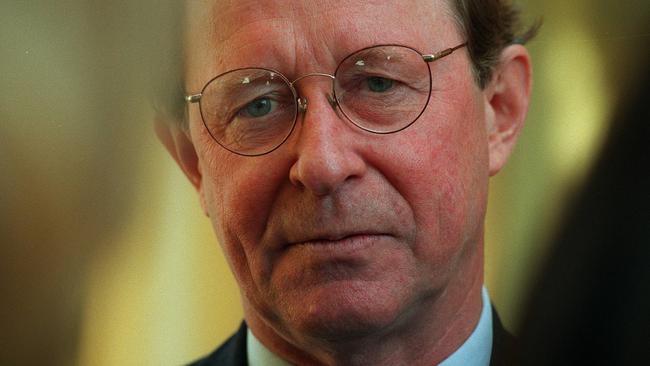‘Control’ sought over republic referendum wording
Cabinet was advised to ‘control’ the words to be proposed in a referendum or risk division.

Cabinet was advised that allowing public consultation on a preamble to the Constitution reflecting Australian “values and aspirations” could “prove divisive” so it was better for the government to “control” the words to be proposed in a referendum alongside a question on becoming a republic.
The submission by attorney-general Daryl Williams and special minister of state Chris Ellison — released on Wednesday by the National Archives of Australia — cautioned against broad public debate about a preamble because it could lead to “expectations for forms of words which are not acceptable to the government”.
Mr Williams and Mr Ellison also recommended “simple recognition” of prior indigenous “occupancy” and suggested that a subsequent referendum could provide a “reconciliation statement” in the Constitution, as well as other constitutional reforms.
“Such a statement, when developed, could be given backing by legislation or, if constitutional backing is necessary, dealt with in a subsequent referendum (perhaps in 2001),” the November 1998 submission noted. “There are other measures such as four-year terms and membership requirements for parliament (s.44) which could also be dealt with then.”
The twin referendum questions, recommended by the Constitutional Convention in February 1998, were put to voters in November 1999. Both were decisively defeated, with 45.1 per cent voting “yes” for a republic and 39.3 per cent voting “yes” to the preamble. No state recorded a majority vote for the republic or the preamble.
John Howard voted against the republic but for the preamble. He had taken a lead role in finalising the preamble, originally drafted by poet Les Murray, and changes were made to win Senate approval. The treasurer and deputy Liberal leader, Peter Costello, voted for the republic but against the preamble.
Mr Howard told The Australian he was acutely aware that if the republic was supported then he would have to facilitate the transition from a constitutional monarchy. “If the people of Australia had voted for a republic I would have accepted that,” he said.
“I would not have liked it but I wouldn’t have tried any monkey business to stop it happening. But, anyway, they didn’t. They were given a vote and they very clearly voted against it.”
Arthur Sinodinos, then the prime minister’s chief of staff, liaised with Buckingham Palace in the lead-up to the referendum.
Statements were drafted for the Queen covering three possible outcomes: the republic being supported, the republic being defeated and a majority voting for a republic but not in a majority of states.
The cabinet considered the change to a republic in detail during 1998 and 1999. There were regular updates to cabinet on the package of bills and explanatory statements outlining the proposed republic model, reports on consultations with state governments and the development of the official “yes” and no “cases” to be presented to voters, as well as a public information campaign.
Mr Costello told The Australian that what ultimately sunk the republic referendum was the division among republicans, namely those who favoured a direct-election model and voted against a president being appointed by a two-thirds parliamentary majority.
Although still “a minimalist republican”, he does not believe there is any great support to revisit the republic issue.
“I think it is dead, it’s politically dead,” he said. “It’s funny, you know, I thought it was an issue and I thought it was something the country would have to deal with. But it dealt with it by rejecting it and I don’t detect any great movement to bring it back.”



